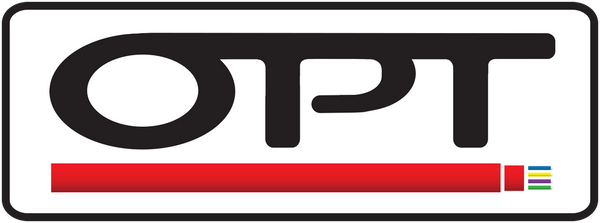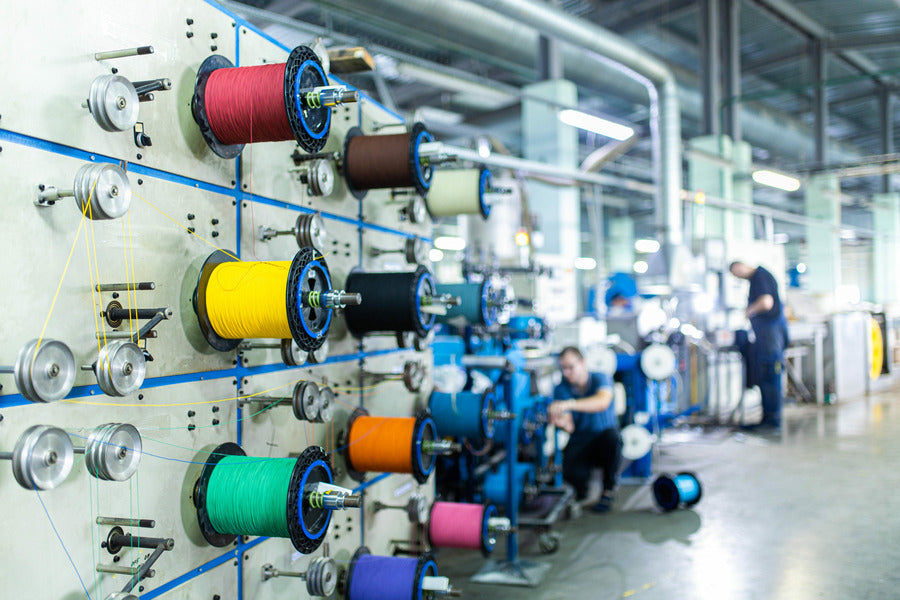Demystifying Fibre Optics: Understanding the Mechanics Behind its Functionality
The term "fibre optics" is familiar to many, but its inner workings often remain a mystery. How exactly does this technology function? How can a slender strand of glass wield the power to reshape our communication systems and even transform the landscape of the internet? In this exploration, we'll delve into the mechanics behind fibre optics, uncovering the remarkable processes that underpin its ability to revolutionize the way we connect and communicate.
How it’s Made

(Glass form being drawn into fibre)
Preform: The process of making fibre optic cables is a fascinating journey that turns raw materials into the vital communication tools we use daily. It all starts with a large, solid glass cylinder called a preform. This preform gives us a sneak peek into what the final fibre will be like. Crafting it involves considering factors like the material's refractive index (it's ability to bend light) and how the different glass elements (known as the core and cladding) are arranged within the preform.
Drawing the Fibre: To turn a preform into an actual fibre, it goes through a process known as drawing. This uses a drawing tower. The preform is heated and stretched in a furnace, transforming it into one long, thin strand. This transformation is carefully monitored with highly accurate measurement equipment to ensure the fibre meets specific requirements and stays within certain limits. The core and cladding are usually part of the same preform and are therefore drawn together.
Coating: After the drawing process, all fibres are coated in plastic. This is to provide protection to the glass and also to increase handleability. For fibres used in multi-fibre cables, this coating could be coloured. Each fibre gets a different coloured coating to make it easily distinguishable later on. Depending on the type of cable, the fibre might also get additional layers for protection and strength - often referred to as the cable sheath. This whole process takes us from basic materials to the intricate network of fibres that make our modern communication possible.
Communicating With Light

(Fibres being strung together)
Refraction: The magic of optical fibres revolves around the basic principle of refraction. Although light travels in a straight line, as the signal moves through the fibre, the pulses of light tend to bounce along within the core, reflecting off the boundary between core and cladding, and refracting through the core itself. This boundary is created due to the different refractive-indexes between the core and cladding material. Lower refractive-index glass is used to create the cladding.
Encoding: Transmitting data through fibre optics involves a two-step process. Firstly the data is encoded into binary and sent as pulses of light from a Transmitter. This clever device turns electrical signals into optical ones using an LED or Laser Diode. At the other end of the line, a Receiver plays its part, transforming the incoming optical signal back into an electrical form, ensuring smooth data transfer. All at the speed of light!
Blown Fibre: A ground breaking innovation within optical fibre and cable installation is the idea of blown fibre. This innovative approach involves introducing compressed air into a preinstalled duct or tube. By capitalizing on the principles of viscous drag and reduced friction from air movement, blown fibre precisely directs the fibre to its intended destination. Notably, this technique offers a distinct advantage over conventional fibre cables – should damage occur or maintenance be required, a new cable can be seamlessly blown in, facilitating swift replacement while maintaining operational efficiency.
Fibre Networks

(Different routes of fibre to the end point)
FTTC: Fibre-to-the-Cabinet (FTTC) is a strategic network architecture that strikes a balance between high-speed connectivity and efficient deployment. With FTTC, fibre optic cables are extended to a distribution point near homes, bridging the gap between traditional copper networks and full-fibre solutions. This setup enables impressive data speeds and bandwidth while minimizing the logistical challenges of full FTTH implementation. FTTC's pragmatic approach enhances connectivity and sets the stage for future scalability, making it a smart choice for evolving communication needs.
FTTH: Fibre-to-the-Home architecture is a cutting-edge innovation that's reshaping the way we experience connectivity. With FTTH, high-speed fibre optic cables are extended directly to individual homes, providing lightning-fast internet speeds and unmatched reliability. This architecture empowers seamless streaming, smooth video conferencing, and rapid data downloads, marking a transformative shift towards a future where bandwidth limitations become a thing of the past.
FTTT: Fibre-to-the -Tower (FTTT) is a pivotal advancement in communication infrastructure. This approach involves deploying fibre optic cables directly to telecom towers, ensuring superior data transmission for mobile networks. FTTT enhances network capacity, accelerates data delivery, and supports the demands of 5G technology and beyond. By reducing latency and boosting signal quality, FTTT plays a crucial role in ushering in a new era of seamless and reliable mobile connectivity.
Conclusion
In conclusion, the realm of telecommunications has been profoundly transformed by the groundbreaking innovation of fibre optics. With ongoing advancements spanning from cable design and production to network installation and architecture, the journey of fibre optics continues to unfold. Undoubtedly, these optical wonders are poised to remain a pivotal force in shaping the trajectory of telecommunications for the foreseeable future.
OPT Services are product specialists for fibre networks. As an approved Reseller in the UK for OFS cables OPT Services can offer ready to ship optical cable at great prices from our website. These can be supplied up to 6km (2km for 36f) or if required cut and coiled to meet your exact requirements (subject to 1km minimum order quantity). If you cannot see what you need please visit our cut and coil page and get in touch on 01473 612188 or email us sales@optservices.co.uk

